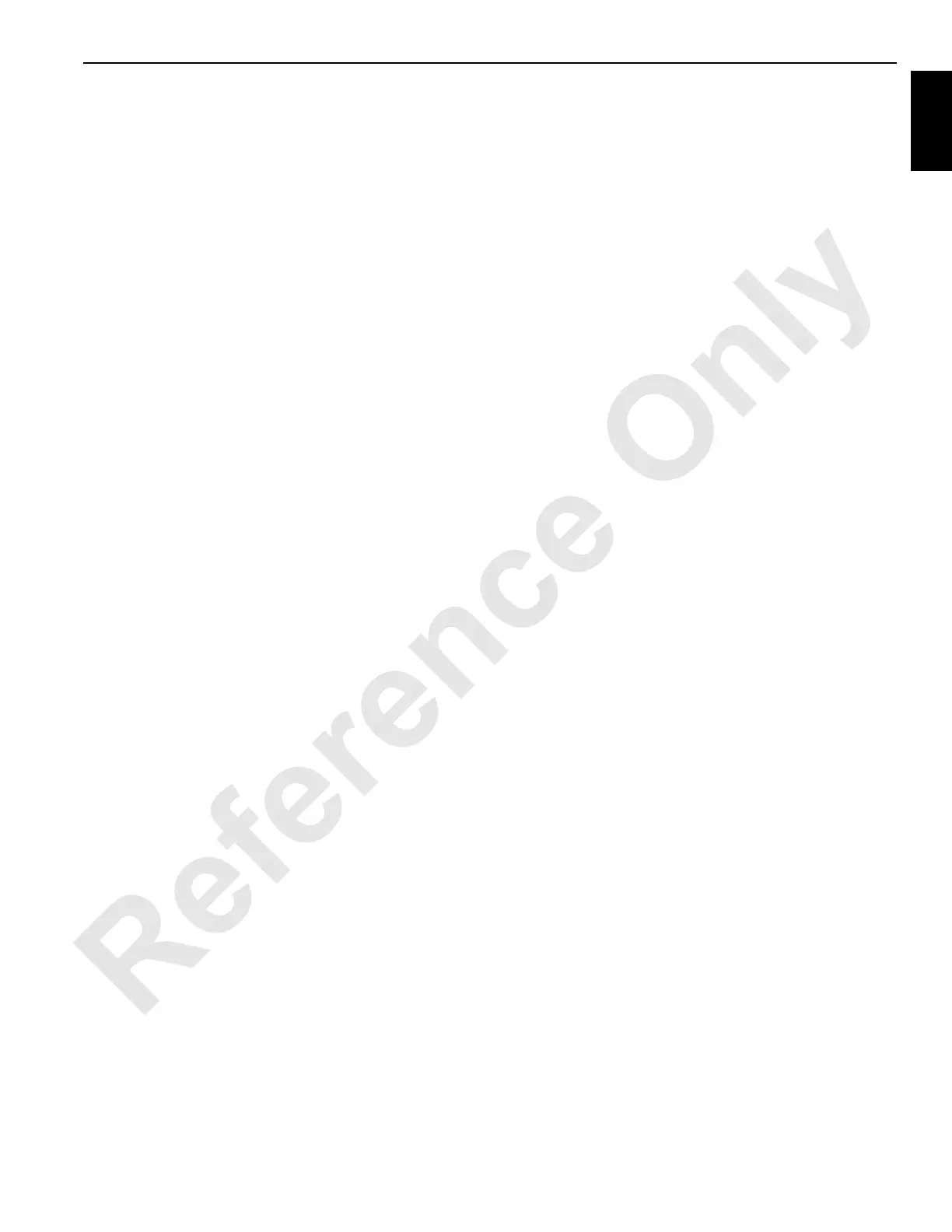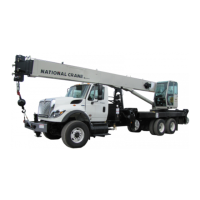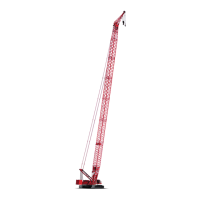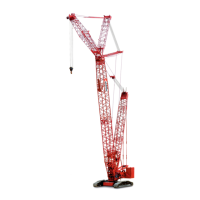Manitowoc Published 09-05-14, Control # 226-02 1-19
14000 SERVICE MANUAL INTRODUCTION
stroke motor at minimum displacement output. If the load at
the motor shaft increases, force on adjustable valve spring
increases. This shifts servo PC valve to de-stroke the motor
to maximum displacement for safe load handling.
The load drums and boom hoist motors also have a ECOR
(Electronic Compensating Over-Ride) valve (16) that is
enabled when system pressure of 4,930 psi (340 bar) is
reached. When system pressure exceeds the ECOR setting,
the valve shifts to direct flow from shuttle valve into maximum
displacement side of servo cylinder. The ECOR valve over-
rides the command from servo PC valve, increasing motor
displacement and output torque and reducing output speed.
When ECOR valve closes, control of the motor returns to
servo PC valve.
The travel motor servo is opposite of other system motors.
The travel variable displacement motors begin operation at
minimum displacement (low torque, high speed). The motor
shifts to maximum displacement (high torque, low speed)
when starting torque is required and back to minimum
displacement when in motion if load is below a preset
pressure of 3,915 psi (270 bar). Depending on motor system,
servo uses low pressure system pressure to perform the
shifting operation. Servo control fluid shifts shuttle valve and
servo control valve before entering servo cylinder.
Continuous changing of closed-loop fluid occurs through
leakage in pumps, motors, and loop flushing valves. Motor
case fluid drainage lubricates the motor and provides a re-
circulation of hydraulic fluid to control heat in closed-loop
system. Motors also have an internal or external loop
flushing (purge) system that consists of control valve (17)
and relief valve (18). If system pressure is above 200 psi (14
bar), loop flushing removes 4 g/m (15 L/m) of hot fluid from
system for added cooling and purification. If system pressure
is under 200 psi (14 bar) loop flush is disabled.
Gear Pumps (optional)
One engine gear pump supplies hydraulic fluid to front and/
or rear free fall drums and rigging winch. One engine gear
pump recirculates hydraulic fluid from self contained spotter
circuit.
Engine Controls
See Engine Controls topic in Section 3 of Operator Manual
for engine operation. See engine manufacturer’s manual for
engine instructions.
The engine is started and stopped with engine key switch.
Engine clutch lever for pump drive must be manually
engaged for normal operation.
Crane systems speed depends on engine speed and system
control handle movement. Engine speed is controlled with
hand throttle or foot throttle and is monitored with a speed
sensor. Node 1 controller and engine node 0 controller
controls and process engine information and display the
information on the main display.
The engine stop push button stops the engine in an
emergency as all brakes apply and any functions stop
abruptly.
Brake and Drum Pawl Operation
All load drums, boom hoist, travel, and swing park brakes are
spring-applied and hydraulically released.
• Swing brake is released immediately when swing brake
switch is placed in off - park position.
• Travel brake is released with control handle movement.
• Selected drum brake is not released until pressure
memory holding pressure is reached to hold the load.
Drum 4 (boom hoist) and drum 3 (when configured with
luffing jib) have drum pawls that are released with the
selected park switch. When operator places selected brake
switch in off - park position, the selected drum pawl is
disengaged from drum. Place selected brake switch in on -
park position to apply pawl to drum.

